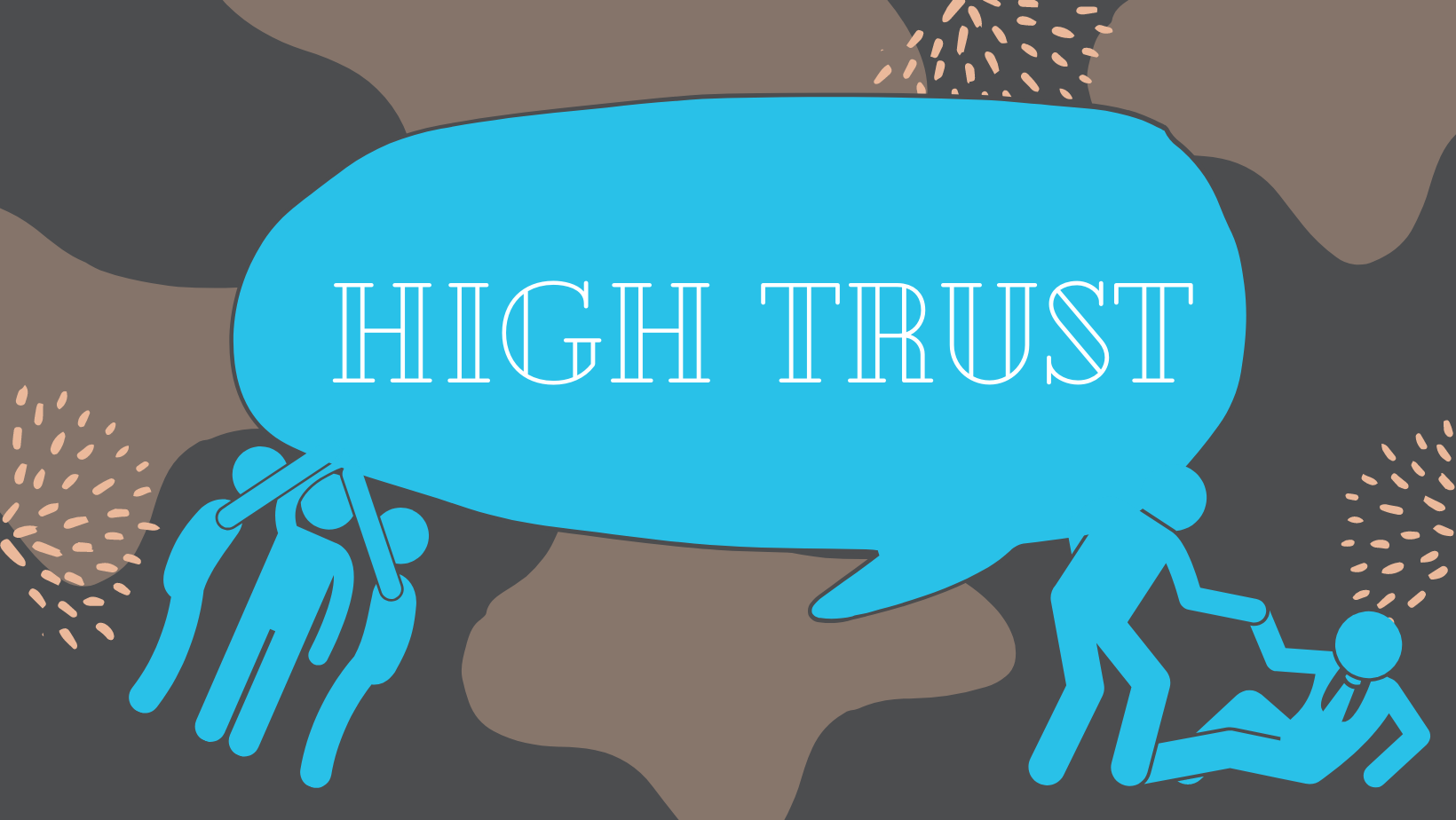Making Achieving the Impossible Routine: High Trust Environments
Ever been in an environment where you’re trusted? Trusted to do excellent work. Trusted to deliver incredible results. Trusted to dream big…

Ever been in an environment where you’re trusted? Trusted to do excellent work. Trusted to deliver incredible results. Trusted to dream big…
Ever been in an environment where you’re trusted? Trusted to do excellent work. Trusted to deliver incredible results. Trusted to dream big dreams and get helpful, constructive feedback.
These kind of environments (I’ll call them High-Trust) are the bedrock of sustained high-performance. When you’re in them, achieving what was previously thought impossible becomes downright routine. Once you’ve experienced them, going back to the previous way of doing things is like sucking the oxygen out of a room. It’s tough.
Trust is the critical ingredient for routinely achieving the impossible
Yet for the incredible impact of High Trust (and the excruciating pain when you don’t), achieving and sustaining it seems like a mystical subject. It’s talked about like a metaphorical Nirvana — amazing if you’re there, but requiring some sort of arcane insight.
After 10 years of leadership, I believe this is false. In my experience there’s three foundational steps we all do, starting today, to build the kind of environment where achieving the impossible is routine.
I believe every person reading this can undertake these steps, and together, we might just change the world ❤
Step 1 is a question. It’s an invitation to reflect. To thoughtfully and without judgement, consider your personal story. To ask yourself: “Do I trust myself?”
This step is wonderfully personal. It gives you permission to explore your life experience so far. To be curious about past successes and failures, the thinking patterns behind them, and the outcomes they resulted in. To reflect upon what you enjoyed or didn’t enjoy. To recognise the times you were under pressure and totally nailed it — and maybe a few times where you didn’t.
“Why do this?” you might ask yourself. The reason is simple. How you view yourself reflects your mental framework when approaching situations — positive, stressful, exciting or anything in between.
Imagine I’m a leader dealing with a super challenging leadership event. It’s beyond the large manual(s) of “Here’s how we do things here” developed by HR/Legal/other leaders, and it’s time-sensitive. I need to make a decision using my best judgement. There’s multiple priorities at stake. Somehow, I have to chart a solution in unknown territory which:
Maybe you can imagine this kind of situation.
Maybe you’re in one right now.
What would a solution look like if I started from a place of:
It might allow me to:
Routinely achieving the impossible starts here.
Framing our experiences this way bootstraps exploration and learning. Permission is granted to learn, grow and change. An environment is created where no matter what happens, positive momentum will be generated.
So why not pop open your journal and get started today!
Ever experienced an incredible sense of appreciation for a company which ‘knows you’?
Maybe it’s something simple like your local barista calling out a personal greeting as you get your morning coffee. Maybe it’s your favourite hotel chain remembering exactly how you like your room, and doing it in a way which is thoughtful, well considered and appropriate.
The knowledge that a company took time to invest in systems and processes to remember you is game changing. By choosing to see you as more than number, they create an environment of welcome, connection and trust.
You feel valued. You feel appreciated. You feel seen.
In business this is called Customer Relationship Management (CRM), and it’s a powerful strategy for levelling up a business.
It’s even more powerful when applied to personal relationships.
For High-Trust to take root, people desire to know that they’re valued, appreciated and seen. In the daily grind of life, with an infinity list of things requiring attention, knowing that another person took time to thoughtfully connect plants this precious seed. These connection moments frequently bloom into places where the deep dreams which predicate challenging the previous impossible become possible.
Supersize this to an entire team and watch as an impossible dream incubator blossoms. Secure in the knowledge of a safe, secure, appreciative environment, people dream dreams about how to create a more amazing products/events/services. These dreams inspire others to dream their own impossible dreams or apply their discretionary effort to helping another. Like magic, what was previously thought impossible becomes routinely achievable.
So Step 2 is to CRM your world.
You can start this right away. Pop open your notes app and start writing down ideas now. If it helps, here’s a framework I personally use to get started:
Don’t delay, CRM today :)
Step 3 is positioning your intent. Every process involving people has ups and downs. There’ll be times when you completely nail it. There’ll be times where you’re not sure. There’ll also be times when it won’t work out for a whole variety of reasons.
You might find that there are times where step #1 is the most liberating thing you’ve ever done. There’ll be other days where it’s just…not.
So be willing.
Willing to give it your best shot every day.
Willing to give yourself permission to try.
Willing to accept when it doesn’t work and learn from it.
Willing to accept when it does work and learn from it.
Willing to be a world changer. To make achieving the impossible routine.
You’ll start creating high-trust all around you.
You’ll learn a ton about yourself and others, and start to find that achieving the impossible is becoming routine.
Share your story in the comments below or connect with me on LinkedIn to share. I can’t wait ❤